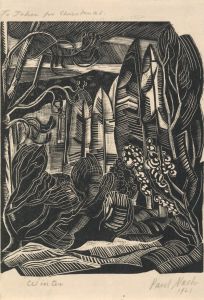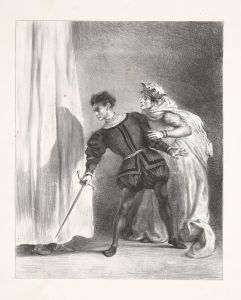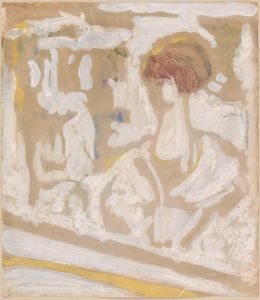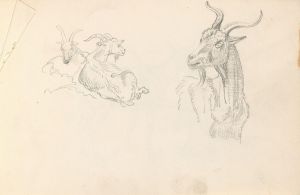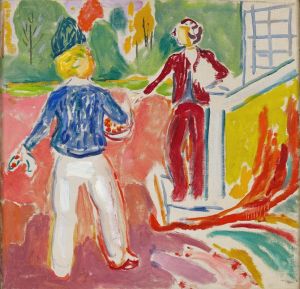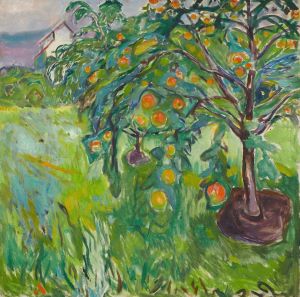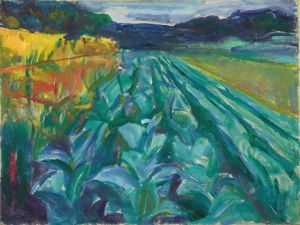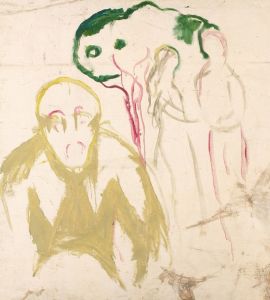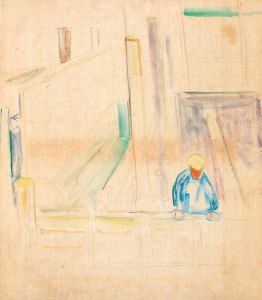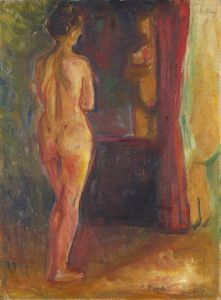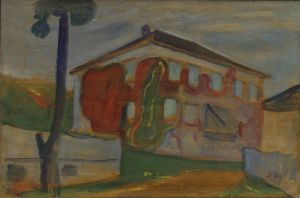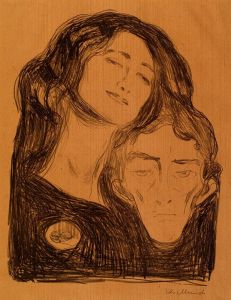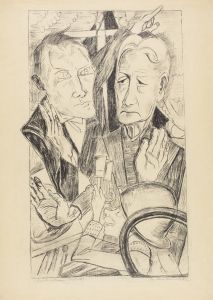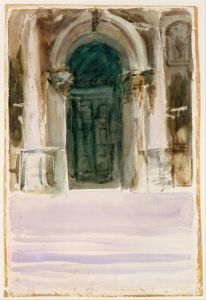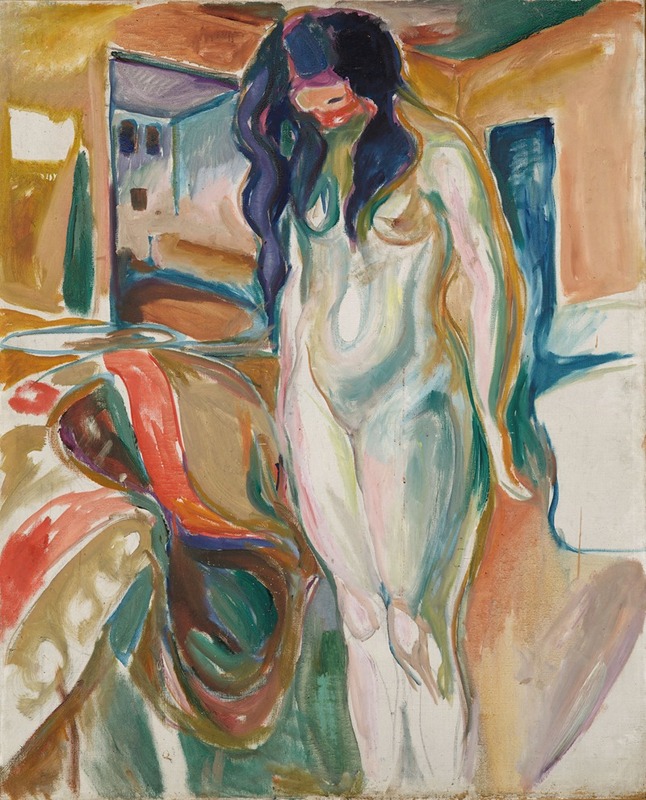
Model by the Wicker Chair
A hand-painted replica of Edvard Munch’s masterpiece Model by the Wicker Chair, meticulously crafted by professional artists to capture the true essence of the original. Each piece is created with museum-quality canvas and rare mineral pigments, carefully painted by experienced artists with delicate brushstrokes and rich, layered colors to perfectly recreate the texture of the original artwork. Unlike machine-printed reproductions, this hand-painted version brings the painting to life, infused with the artist’s emotions and skill in every stroke. Whether for personal collection or home decoration, it instantly elevates the artistic atmosphere of any space.
"Model by the Wicker Chair" is a painting created by the renowned Norwegian artist Edvard Munch. Munch, best known for his iconic work "The Scream," was a pivotal figure in the Symbolist movement and a precursor to Expressionism. His works often explore themes of existential angst, love, and death, reflecting his own turbulent life and emotional struggles.
"Model by the Wicker Chair" was painted in 1919, a period when Munch was recovering from a nervous breakdown and the Spanish flu pandemic. This time marked a shift in his artistic style towards more vibrant colors and a focus on the human figure in various states of contemplation and rest. The painting depicts a female model seated by a wicker chair, a common piece of furniture that adds a domestic and intimate atmosphere to the scene.
The composition of "Model by the Wicker Chair" is characterized by its use of bold, expressive brushstrokes and a vivid color palette. The model is portrayed in a relaxed pose, her body slightly turned away from the viewer, which creates a sense of introspection and calm. The wicker chair, with its intricate patterns, contrasts with the simplicity of the model's form, highlighting Munch's skill in balancing detail with abstraction.
Munch's choice of subject matter and setting in this painting reflects his interest in capturing the quiet moments of everyday life, as well as his fascination with the human psyche. The model's serene expression and the tranquil environment suggest a moment of respite and reflection, themes that were particularly relevant to Munch during this period of his life.
"Model by the Wicker Chair" is part of Munch's later body of work, which includes a series of paintings and prints that explore similar themes of solitude and introspection. This painting, like many of Munch's works, is imbued with a sense of psychological depth and emotional resonance, making it a significant piece in his oeuvre.
Today, "Model by the Wicker Chair" is held in the collection of the Munch Museum in Oslo, Norway. The museum, dedicated to preserving and showcasing Munch's legacy, houses an extensive collection of his works, providing insight into the artist's development and the various phases of his career. The painting continues to be studied and appreciated for its artistic and historical significance, offering a glimpse into Munch's world and the enduring power of his vision.
In summary, "Model by the Wicker Chair" exemplifies Edvard Munch's ability to convey complex emotions through his distinctive style and choice of subject matter. It stands as a testament to his enduring influence on modern art and his profound understanding of the human condition.





